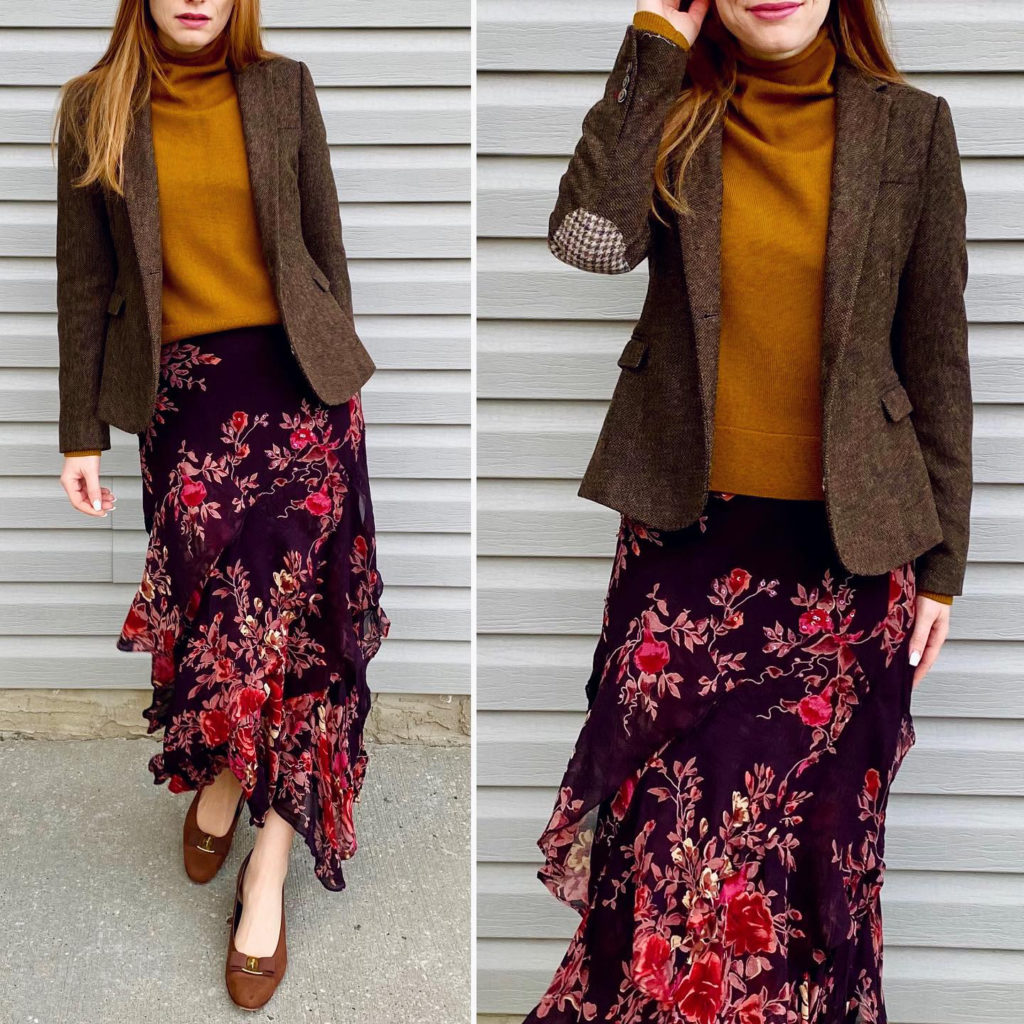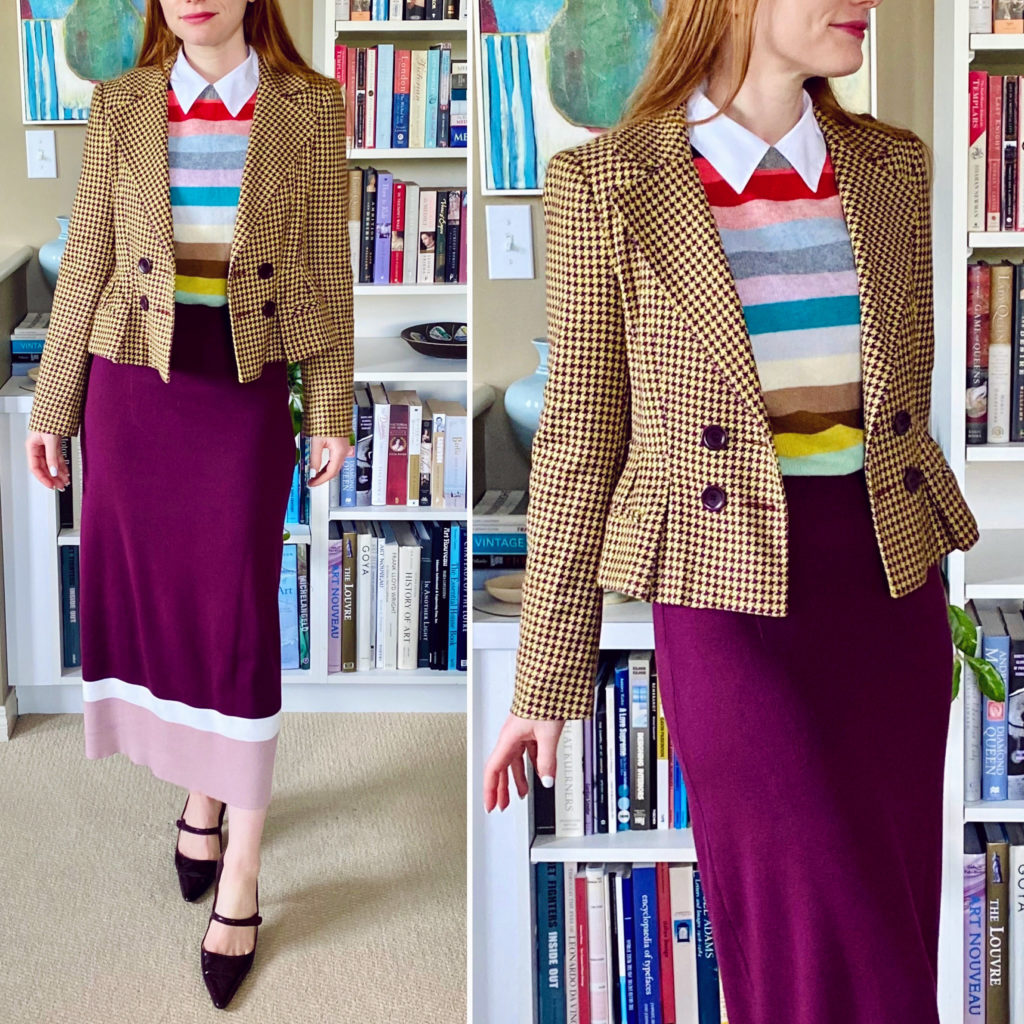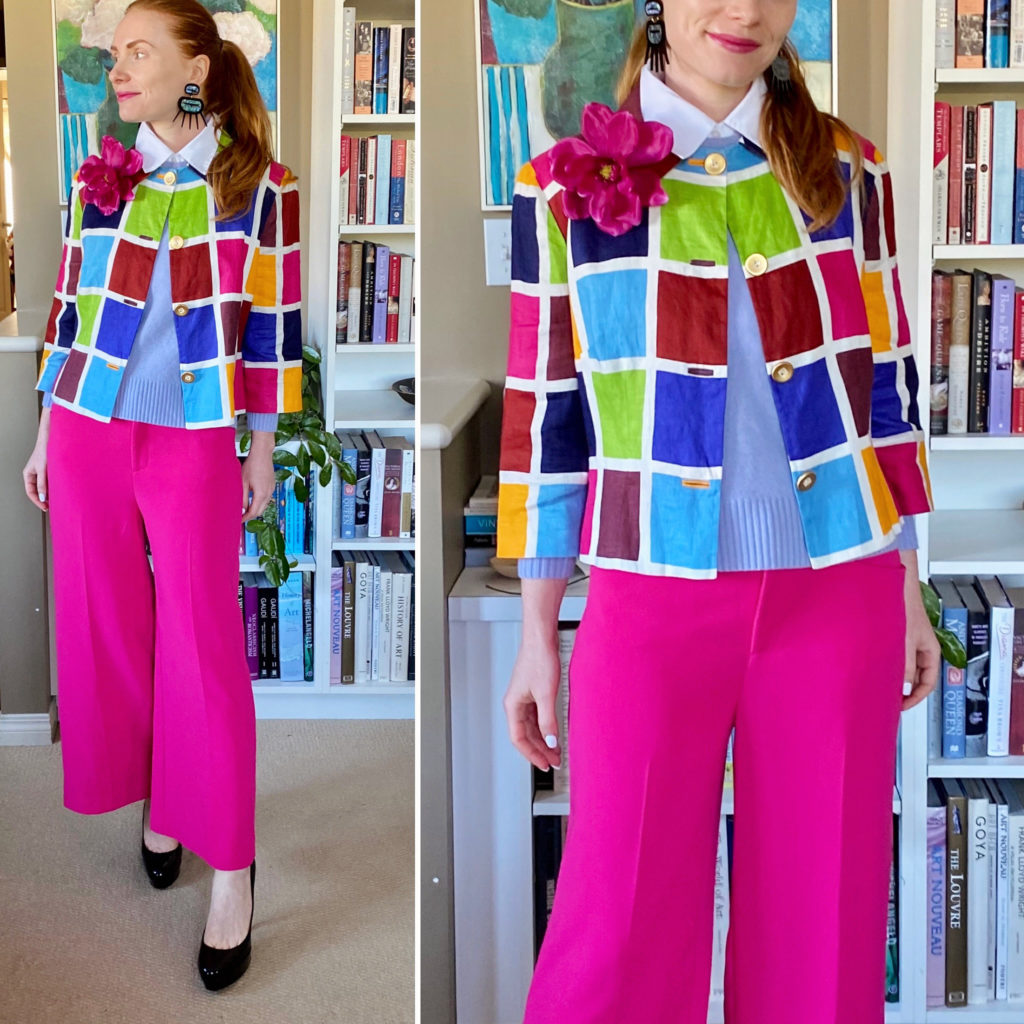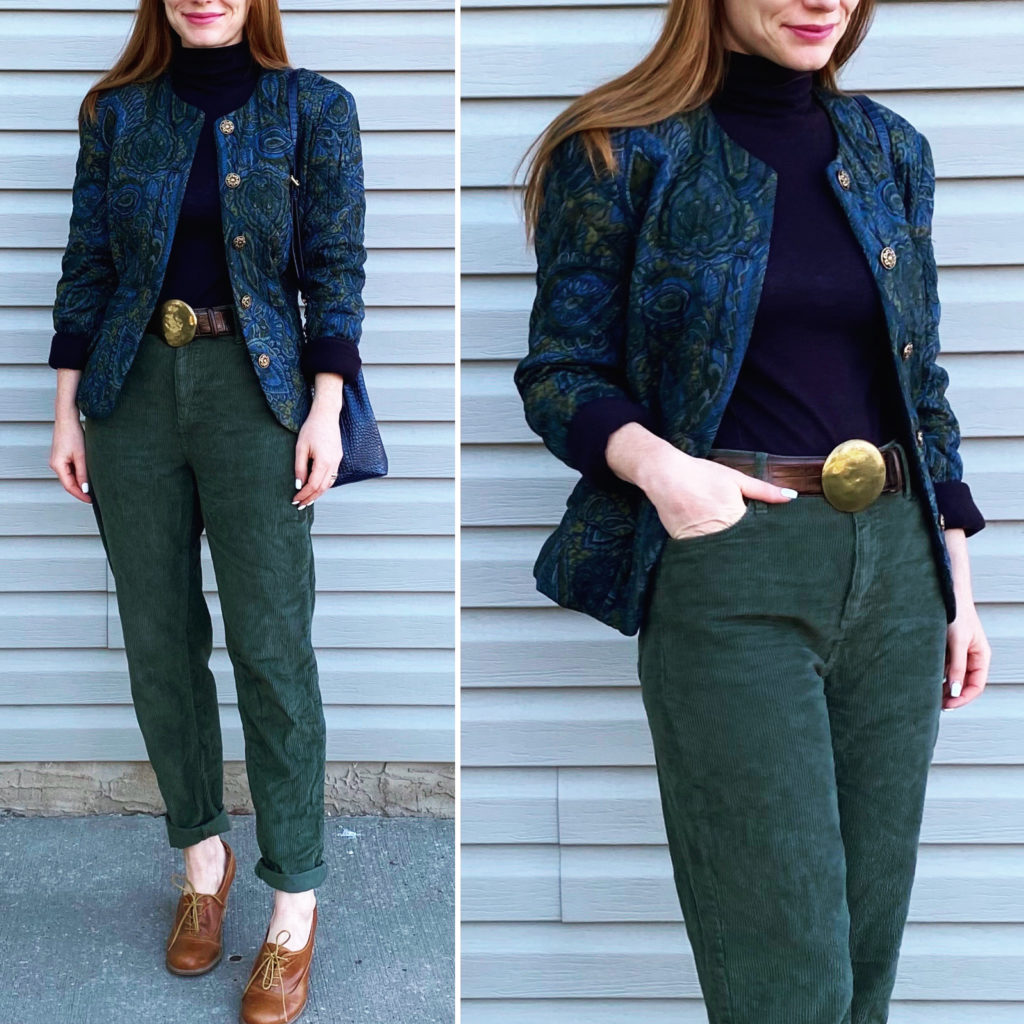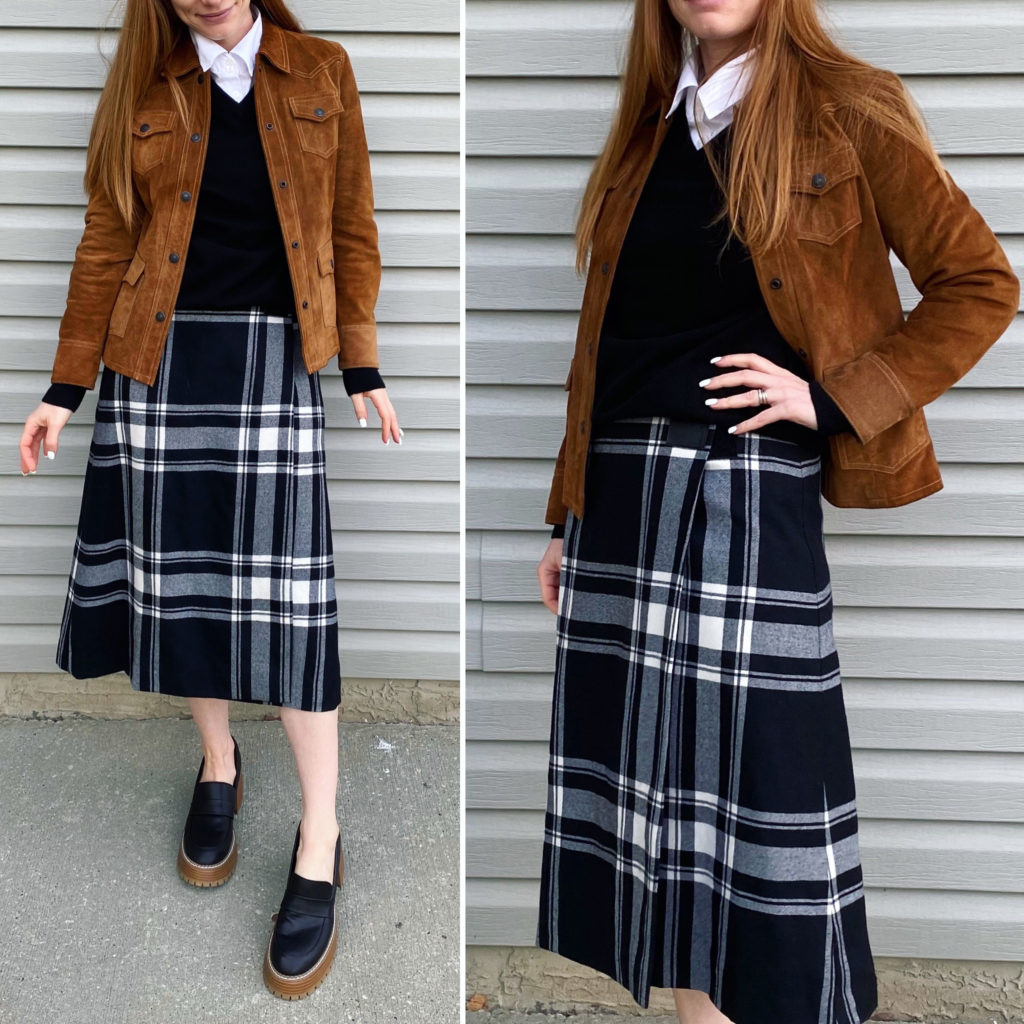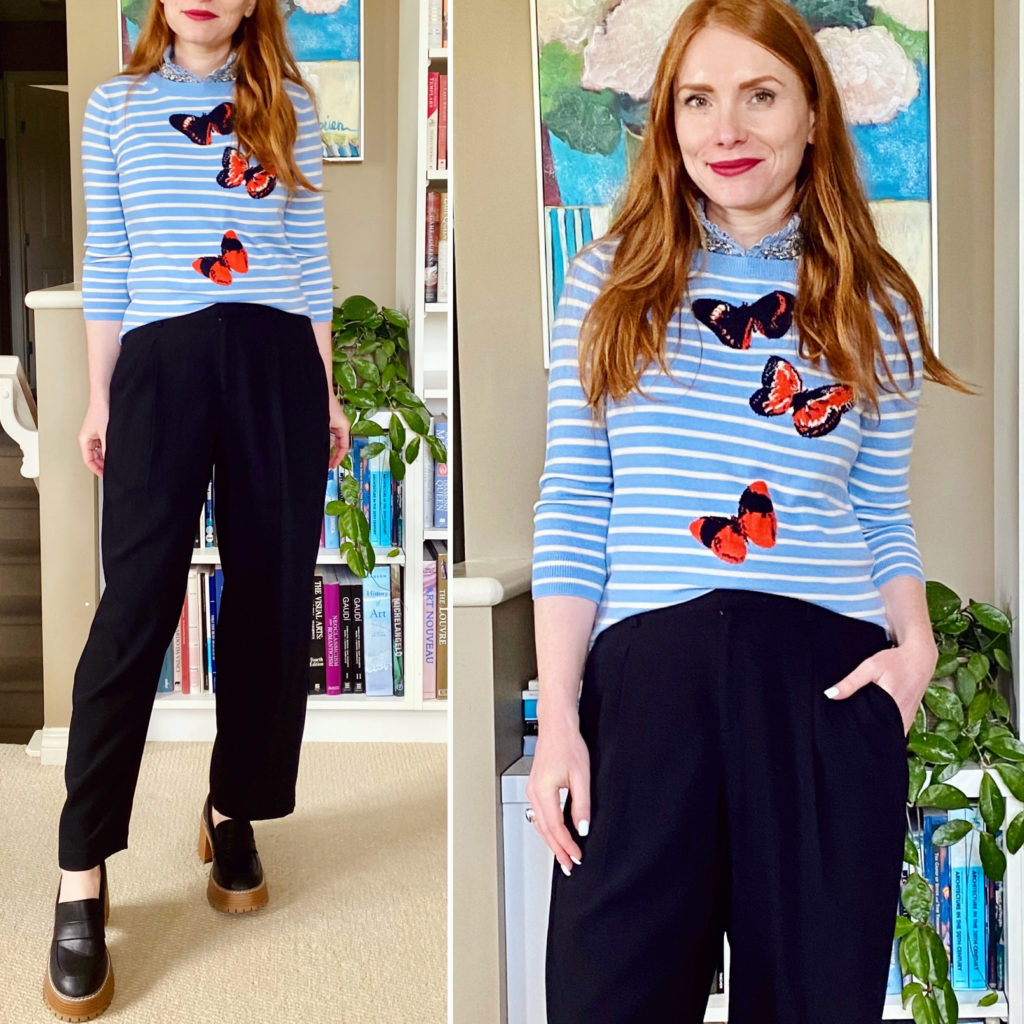A question I get asked with some frequency on IG concerns my Poshmark strategies; not to toot my own horn, but I have been able to score some pretty sweet deals from time to time, and I guess people want to know the secret sauce.
There is no secret sauce.
Wait, don’t X your way out of here just yet. I have some thoughts. Let’s talk about it.
I’ve been on Poshmark for 2 years and during that time I’ve bought … ahem, one or two things. I’ll spare my blushes and not attempt to give you an exact number. I could write a lot about my experiences on Poshmark — trends I see, things that bug me, weird seller behaviour — but anecdotes are probably not going to help you much. Overall, I would say 95% of my experiences have been positive, in the sense that I received what I was expecting from the purchase. I’ve only ever done one return, when the seller sent me the entirely wrong item and Poshmark reimbursed me, and have had a couple of situations where the item came with flaws not disclosed in the original listing (but not major enough for me to open a case with Poshmark). That’s not to say that all my purchases were hits, but generally where they have fallen short, it’s because they were impulse buys I didn’t think through well enough.
One thing that may have an impact on my Poshmark experience and the searching strategies that I’ve found useful is something I haven’t specifically called out before. Maybe it’s obvious, maybe not. I shop on Poshmark Canada. Based on limited exposure to the US version of the app, my sense is that Poshmark Canada remains rrelatively smaller (i.e. with fewer listings overall). You will see in a moment why this could be important.
I have discussed my general strategies before but let’s do a more in-depth refresher. As time goes on and the app itself evolves, my strategies get tweaked. Gotta stay nimble!
One strategy is searching up specific brand names — e.g. “Dries Van Noten” or “MaxMara” — and sorting the results one of 2 ways depending on what I’m looking for:
- Sort by “Just in” if I quickly want to see new listings (posted since my last check). Remember how I said that Poshmark Canada is a smaller market? That makes it feasible to browse the results of a general search for most high-end designer brands within a relatively short time because there won’t be more than a dozen new listings* if I run the search on, say, a weekly basis. [*Note: this is true for most clothing-focused high end brands. For brands that also sell accessories, like Gucci for example, you will end up with a lot more new listings.]
- Sort by “Price – Lowest to highest” if I am in the mood to see what bargains popped up recently that I might have missed. I use this less frequently, usually if I’m bored. I don’t usually recommend letting price be the main driver of your clothing purchase decisions, but sometimes a price cut will bring an item previously out of budget within reach. Or make me more willing to consider a “style risk” type of piece.
This approach has its limitations — the more popular the brand, the more results to browse — but the advantage is that, through a general search, you can come across cool pieces that you didn’t already know about. Otherwise, if you are looking for something specific (either a particular item or a general category of items), it’s better to combine the brand name with a descriptor (for example “dries van noten skirt”) or to narrow the search down by category (“dries van noten” then select “skirts” under category).
I never select the Poshmark brand name category to run my searches, and instead use the name itself as a search term. I don’t know why, but I find that using Poshmark’s brand category (if it exists) sometimes doesn’t catch all listings. I don’t understand their algorithm. If the brand name is distinctive enough, I often use a shorter version — like “cornejo” instead of “Zero+Maria Cornejo”. I have no idea if this is the optimal approach, but it’s what works for me.
Also! Poshmark now has a Saved Searches feature (finally!) so you can save your most frequent searches and re-run them without having to type out the terms every time. It also helps you remember all the things you want to keep an eye on.
The other strategy is using descriptive search terms. These might be one word only — in my case, “turquoise” has been a long-standing search — or something more detailed. For common brands like Zara, I may combine the brand name and a descriptive term. Depending on what I am looking for, that could be something generic (“Zara jeans”) or something specific (“Zara sequin skirt”) or something SUPER specific (“Zara blue sequin skirt”). Obviously, the more generic the descriptive term(s), the more results you will get. I don’t always have time for mindless browsing but sometimes I’m in the mood — browsing a general category is how you can come across unexpected gems. Again, you can sort by “Just in” or “Price – Lowest to highest” depending on what you want to see first.
If I am using one generic search term — like “turquoise” – I will sometimes narrow the results by category — in my case, Jewelry. I call this a “wild card” search because you never know what you might get. I’ve found quite a few amazing pieces this way, and discovered new-to-me designers.
There is something of an art to choosing search terms and I couldn’t possibly cover it all in one post that is already getting too long. The more specific the terms, the narrower the results. If your search isn’t turning up enough results, widen it — use fewer terms or different (analogous or related) terms. Here is an example from my current search list. I mentioned before that I am looking for palazzo-style jeans and I have a number of on-going searches saved in Poshmark for this purpose. My search terms include:
- “palazzo jeans” (obvious)
- “trouser jeans” (in my opinion, not as accurate of a descriptor but one used by many brands and I want to see any adjacent styles that might meet my needs)
- “wide leg jeans” (this is very broad and I often combine it with a brand name like Zara — why Zara? because it’s a trend-based brand so they are likely to have a version of most popular current trends.)
To be able to run effective searches, synonyms are your friends. People describe items in different ways, not always using the precise industry term. For example: “bustier” and “corset top” and “crop top” — these are technically different things, but I have seen them used by sellers to describe very similar items of clothing.
An important drawback to using very specific search terms is that it may miss relevant listings where the seller doesn’t include any descriptor terms. This is especially true for non-resellers, i.e. people selling from their own closet. People who don’t have experience selling online will often not include relevant information; some might just list the brand and size but no other description. This means that, even if the item meets the criteria of your search, it won’t show up in the results. There is no surefire way around this other than to run very, very broad searches and browse a LOT. I’m not usually in the mood for this, but if I have time to waste, it’s an approach that can pay off. Non-professional sellers often offer better prices than resellers.
The general moral of the story: success on Poshmark is not entirely unlike success at thrifting. Checking the app regularly increases your chances of finding cool bargains. The more time you spend browsing, the better your chances. Sometimes, it’s luck of the draw – being in the right place at the right time (when a listing goes up).
I have a whole other set of strategies I use once I’ve identified a listing of interest … but let me know if that’s something you would want to read more about.

